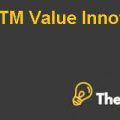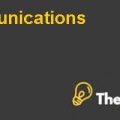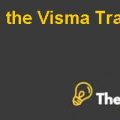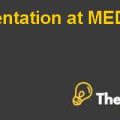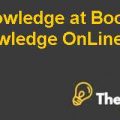
PCAOB Guidance: Docket 038 Case Solution
Introduction
It was followed by two proposals taking into account the comments on the first and second proposal. The final proposal to SEC was in July, 2014.
The assignment will focus on the procedures involved in setting the standard, potential changes to the current standards and discussion on the rule. It will also include a formal commenting document on the rules and the process on submission of the commenting document.
Proposal Details
Purpose and Background:
The rule was proposed to put an emphasis on the risks associated with fraudulent activities and errors. It was believed that the current required procedures were not sufficient to tackle the growing risks and the attention of auditors needed to be changed to focus on these risky areas. The board believes that the increased attention by auditors in these risky areas will also increase the chances of identification of material misstatements (PCAOB, 2014). The new standard and amendments are focused on the following key areas:
Relationships and Transactions with Related Parties:
The standard increases the emphasis on the auditors to get an understanding of the company’s relationships and transactions with related parties and reduce risk of material misstatement. These risks need to be identified and assessed with Auditing Standard number 12 (PCAOB, 2014). Auditors need to obtain an understanding of the company’s process, perform inquiries, communication with the engagement team and other auditors (PCAOB, 2014). The new policies provide specific procedures for the auditor to evaluate company’s processes related to identifying and disclosing related parties (PCAOB, 2014). Auditors need to design and implement audit procedures to identify risk of material misstatements (PCAOB, 2014).
Significant Unusual Transactions:
The new rule provides amendment to the auditing standard No. 5, paragraph 14, from “Controls over significant, unusual transactions, particularly those that result in late or unusual journal entries”(PCAOB, AS5 - Paragraph 14 , 2014) to a particular reference to transactions that are outside the normal course of business… unusual due to their timing, size and nature (PCAOB, 2014). Similarly, some amendments were made to accounting standard number 9 regarding audit planning. The new rule specifically directs an auditor to unusual transaction due to the timing, size and nature(PCAOB, 2014)rather than auditor’s understanding of the company and its environment(PCAOB, AS No. 9: Audit Planning, 2014)
Additionally, similar amendments were made to the Audition Standard numbers 12 and 13. The amendments regarding the significant unusual transactions provide specific procedures for auditors to identify and evaluate material or significant unusual transactions in a company. It will also help auditors understand the purpose of the transaction(PCAOB, 2014).
Financial Relationships and Transactions with Executive Officers:
The last major amendment relate to financial relationships and transactions with executive officers in a company. The executive officer can be any person with a significant position and policy making power in the company or subsidiary. In extension to the audit procedures discussed above, the auditors are required to identify and assess the risks of material misstatements in financial statements associated with the Executive Officers (PCAOB, AS5 - Paragraph 14 , 2014).
The new standard emphasizeson reviewing the employment, compensation contracts and special bonuses of executive officers and also other important document like proxy statements and regulatory requirements. Auditors can also enquire compensation committee or entity or person assignment with similar responsibilities(PCAOB, 2014).
Opinion and Discussion
The related party and unusual transactions are always difficult audit areas. These areas particularly need auditors to be highly sceptical even if the transactions are not material. These transactions are important due to the nature of these transactions. There have been a number fraudulent activities in the past associated with related parties and unusual transactions.....................
This is just a sample partial case solution. Please place the order on the website to order your own originally done case solution.


